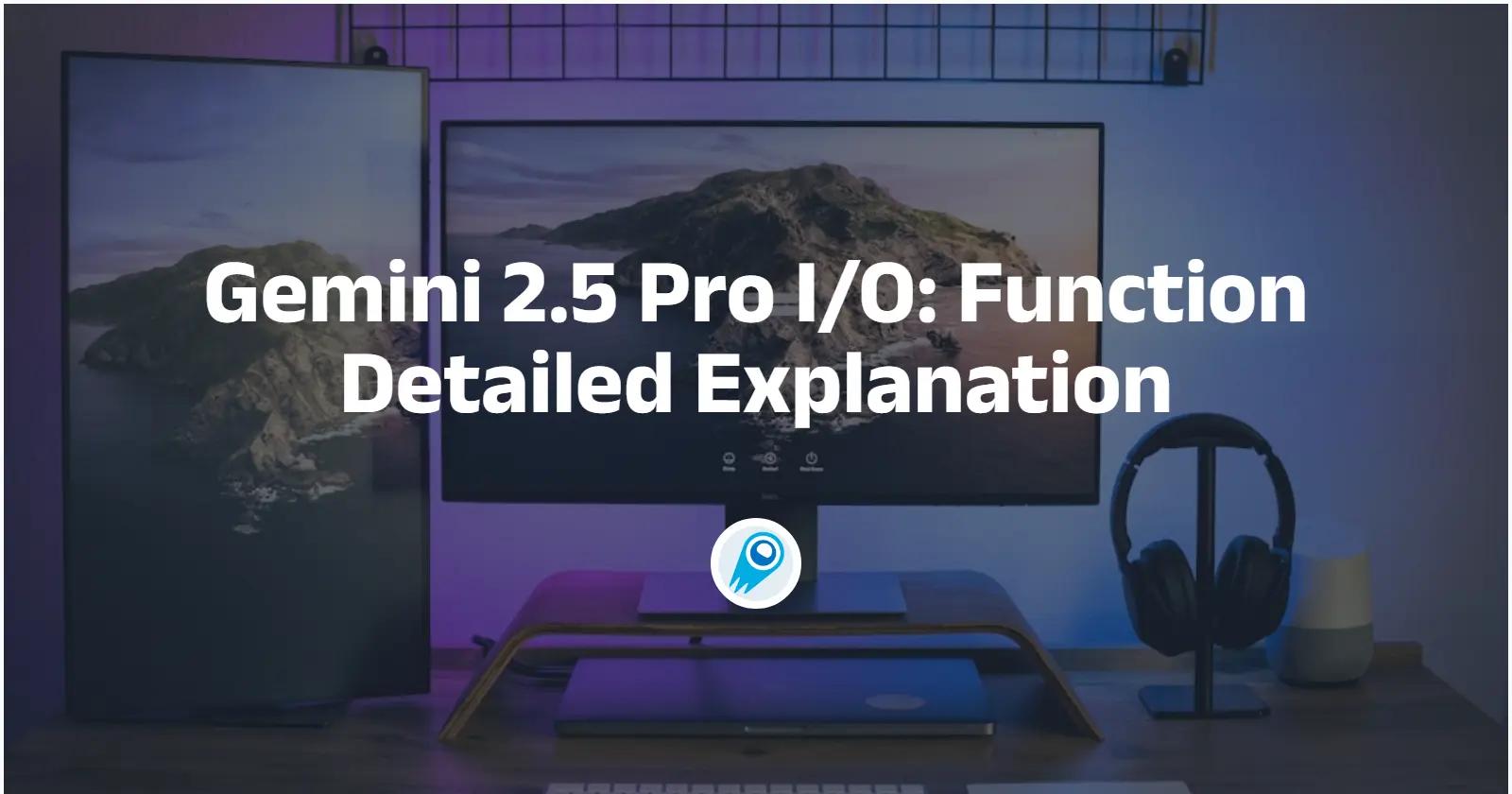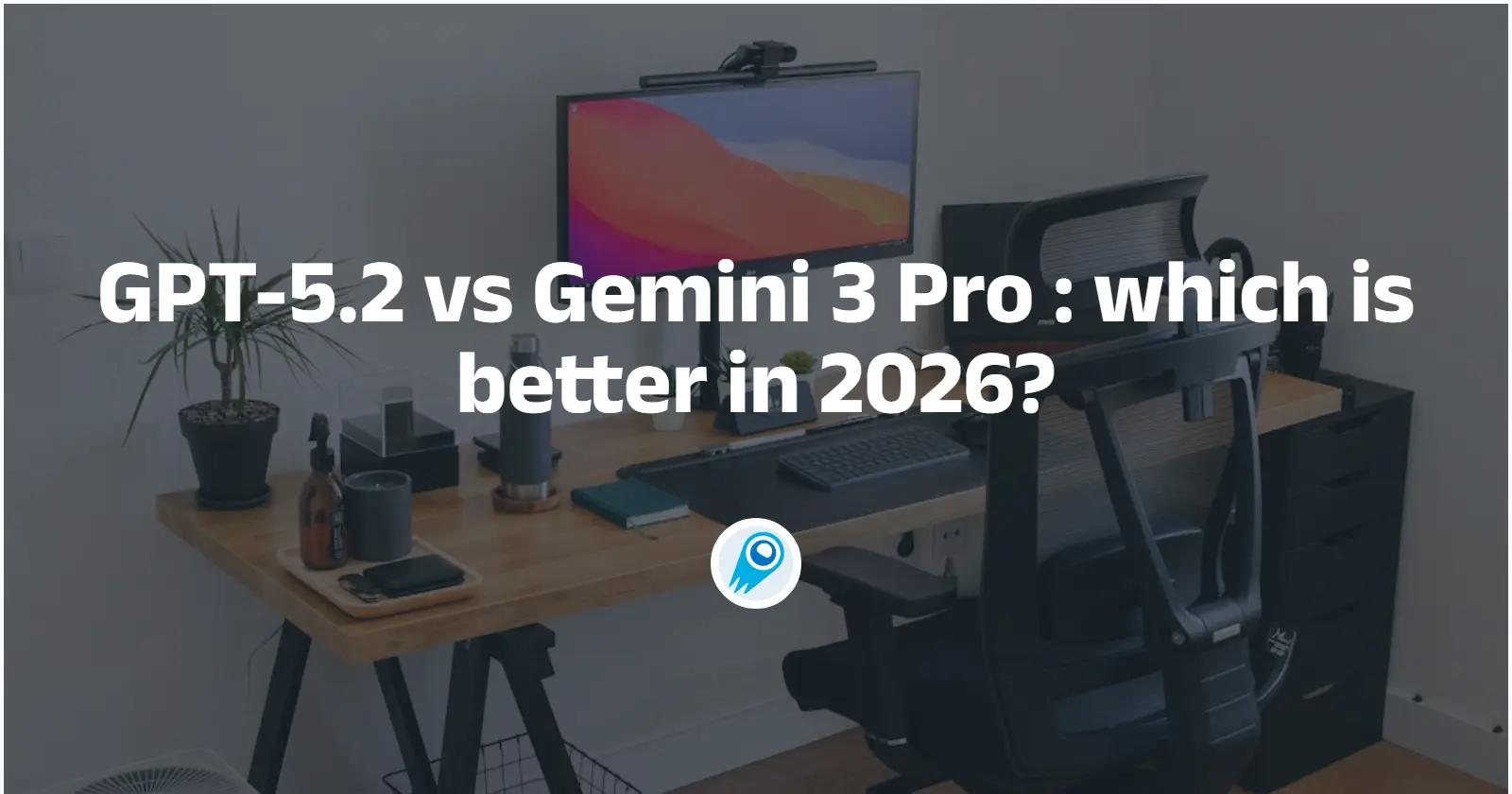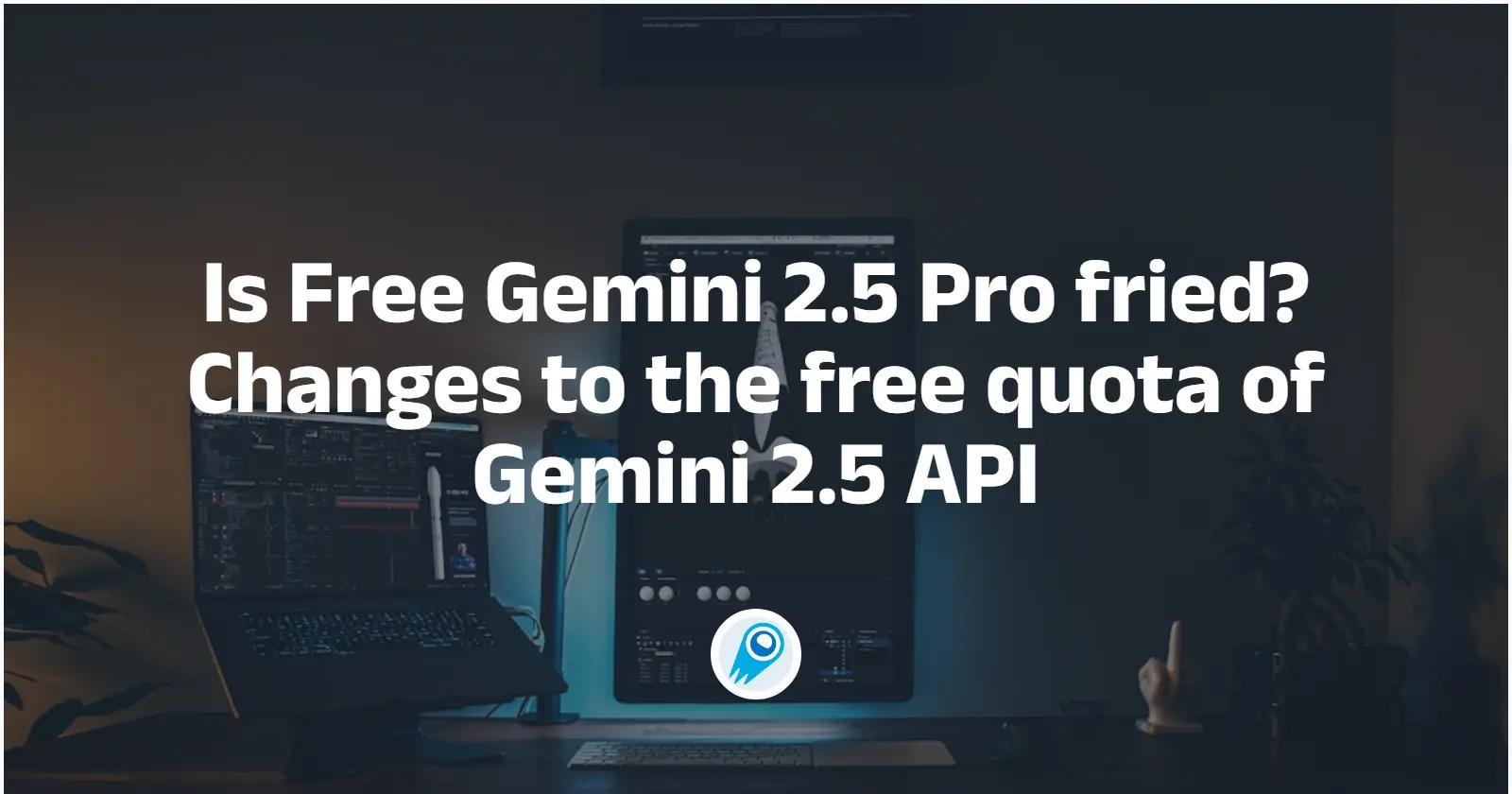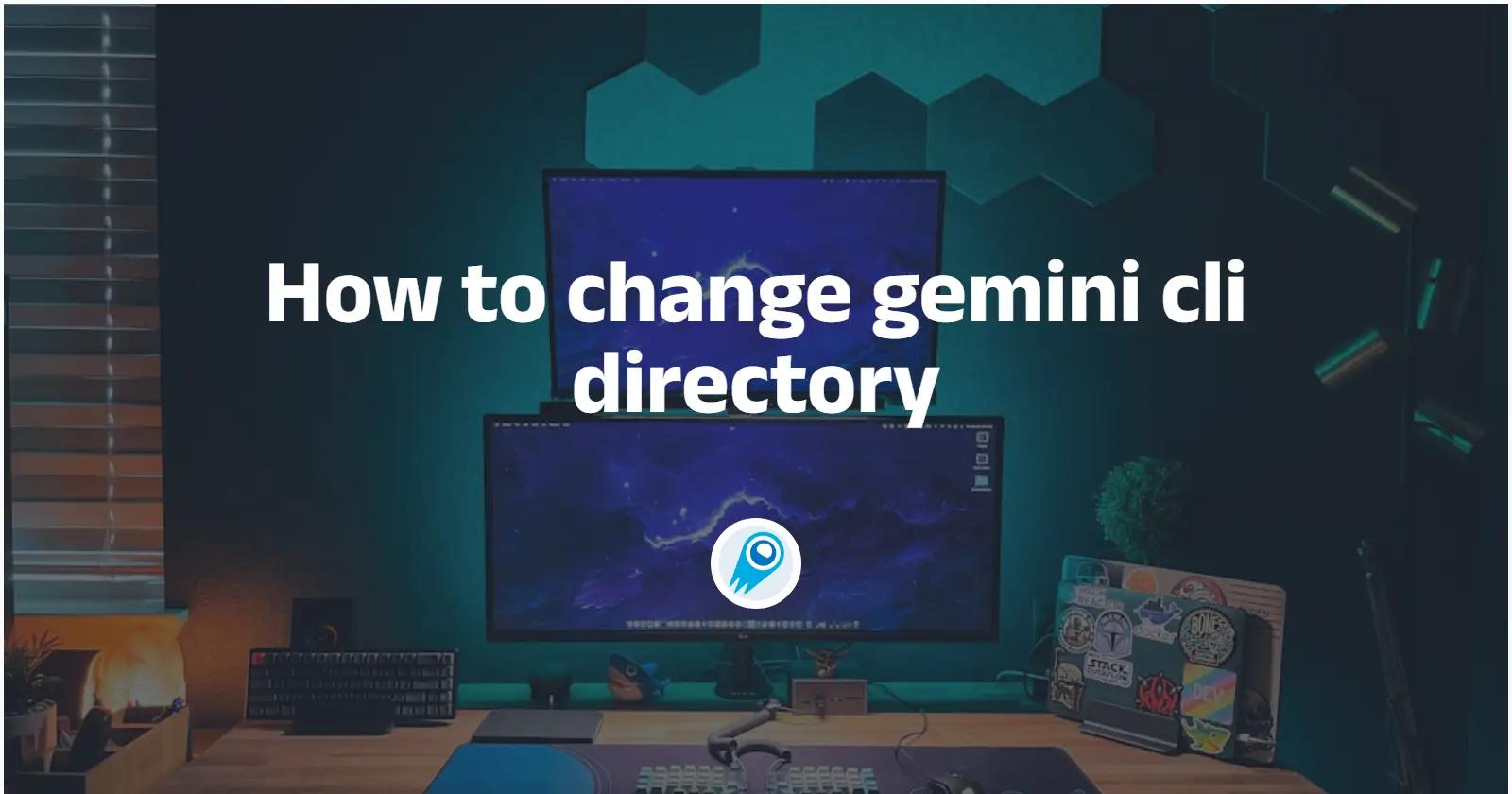Gemini 2.5 Pro I/O Edition represents a landmark update to Google DeepMind’s flagship AI model, delivering unmatched coding prowess, expanded input/output capabilities, and refined developer workflows. Released early ahead of Google I/O 2025, this preview edition elevates frontend and UI development by securing the top spot on the WebDev Arena Leaderboard, achieves state-of-the-art video understanding, and introduces robust improvements in function calling and error reduction. Priced identically to its predecessor—at 1.25 per million tokens in and 10 per million tokens out—it offers a cost-effective solution versus competitors while maintaining a generous 200,000-token context window. Multimodal I/O functions like “video to code” and single-prompt app generation simplify prototyping, and endorsements from industry leaders underscore its practical value. Looking ahead, Google plans to extend context capacities and integrate advanced I/O features, cementing Gemini’s position as an indispensable tool for real-world coding challenges .
What is Gemini 2.5 Pro I/O Edition?
Genesis and release timeline
Gemini 2.5 Pro I/O Edition was announced on May 6, 2025, as an early preview designed to give developers a head start before Google’s I/O developer conference later that month . This edition replaces the March 25 release (03-25) with an updated model labeled “05-06,” automatically routing existing Gemini 2.5 Pro users to the new version without any action required .
What distinguishes the I/O Edition?
Unlike standard updates focused on backend optimizations, the I/O Edition emphasizes markedly stronger coding capabilities in both front-end and fundamental code transformations . It introduces refined multimodal I/O functions—such as video understanding and interactive app generation—that expand the model’s utility beyond text and code into richer media domains.
What are the headline improvements in Gemini 2.5 Pro?
How has coding performance been elevated?
Gemini 2.5 Pro now delivers “significantly improved” code generation and refactoring capabilities, handling complex back‑end restructuring tasks with “senior‑developer” level abstraction and architectural choices. In internal Cognition benchmarks, it passed advanced developer test cases for the first time, showcasing robust module redesign, API rewriting, and multi‑step logic implementation without additional fine‑tuning .
Furthermore, its function‑calling reliability has been enhanced: error rates have dropped substantially while trigger rates have risen, enabling smoother construction of agentic workflows that chain multiple function calls . Existing developers using the Gemini API will find a seamless transition, as the system automatically defaults to the upgraded model without any required code changes .
What front‑end and UI capabilities have been added?
In the realm of front‑end development, Gemini 2.5 Pro ascends to the #1 position on the WebDev Arena leaderboard—a human‑preference ranking of AI models for building functional, aesthetically pleasing web applications—surpassing Claude 3.7 Sonnet and previous Gemini versions by over 140 ELO points .
The model can automatically translate design mockups into production‑ready HTML, CSS, and JavaScript components, complete with responsive layouts and consistent styling. It recognizes visual elements such as button interactions, typography, spacing, and animations, reproducing them faithfully to ensure new UI modules blend seamlessly with existing design systems. For example, developers using the Gemini 95 Starter App can request “a style‑matched video player,” and the model will infer the project’s design tokens and output a ready‑to‑use component within seconds.
How does Gemini 2.5 Pro fuse video understanding with code generation?
Gemini 2.5 Pro extends its native multimodal capabilities into video: it achieved an 84.8 percent score on the new VideoMME benchmark, ranking among the top “video‑understanding” large models available . Leveraging this strength, developers can supply a YouTube clip and receive a fully interactive learning or demonstration application—complete with extracted content, custom UI screens, and underlying logic scripts .
Google AI Studio’s “Video to Learning App” demo illustrates this workflow: a tutorial video is ingested, key points are mapped to interactive modules, and a finished educational app is generated without human intervention . This advancement signals a shift from “language‑driven code” toward “video‑driven product” creation in the multimodal AI landscape.
Where and how can developers access Gemini 2.5 Pro?
Which platforms and pricing models apply?
The Gemini 2.5 Pro I/O Edition is immediately available via the Gemini API in Google AI Studio and through Vertex AI for enterprise customers. The preview release retains the same pricing as the previous version, ensuring no additional cost for early adopters .
By default, all existing API calls targeting the Gemini 2.5 endpoint are automatically redirected to the new Pro model (05‑06), eliminating migration overhead for development teams . Detailed model cards, documenting benchmark results and feature changes, have been published alongside the release for transparency.
CometAPI already supports calling Gemini 2.5 Pro I/O API (model name : ggemini-2.5-pro-preview-05-06).
How does Gemini 2.5 Pro compare to its competitors?
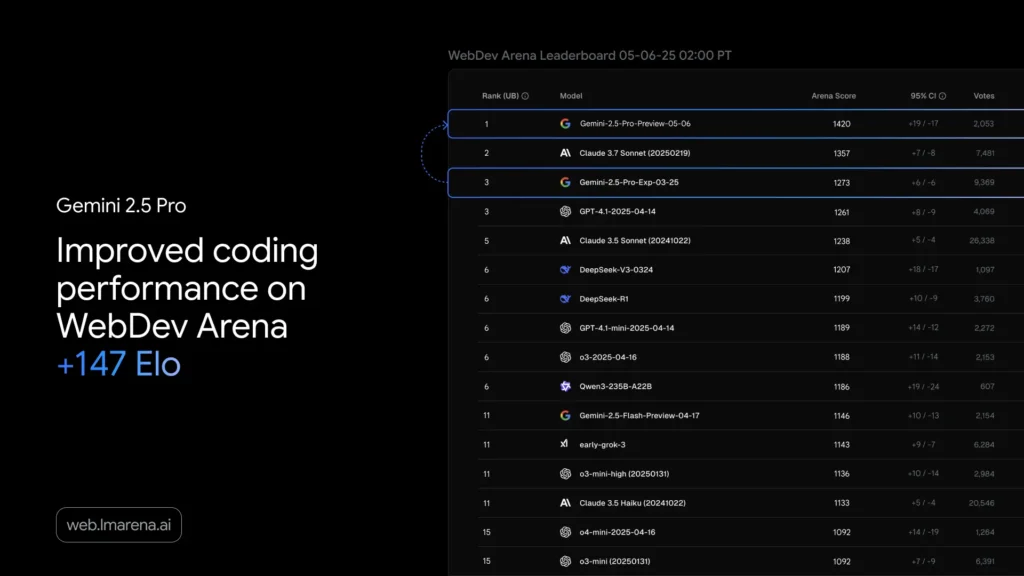
How dominant is its WebDev Arena ranking?
With an Arena Score of 1419.95, Gemini 2.5 Pro leads the WebDev Arena board, outpacing Claude 3.7 Sonnet (1357.10) and GPT‑4.1 (1261.35) by a significant margin. This leap reflects user preference for Gemini’s combination of design fidelity, code maintainability, and UI polish.
What do broader AI benchmarks reveal?
Beyond front‑end, Gemini 2.5 Pro extends its advantage across general reasoning and coding benchmarks. On LMArena—a composite of AI understanding and problem‑solving tests—it holds a 39 ELO‑point lead over the nearest rival, according to Google DeepMind CEO Demis Hassabis.
Its multimodal prowess, spanning text, audio, images, video, and code, continues to set it apart in a market where integrated AI reasoning is rapidly becoming table stakes.
What real-world use cases highlight its capabilities?
App prototyping from a single prompt
One of the I/O Edition’s most lauded features is its ability to generate full interactive web apps from a solitary prompt. Within the Gemini app, users can input design themes or visual patterns and receive complete code for functioning applications, dramatically shortening prototyping cycles .
Agentic workflows and integration
The enhanced model powers sophisticated agentic workflows, as exemplified by integrations with Replit Agent and Cursor’s code agent. These pipelines automate complex tasks like backend routing refactors and UI component styling with minimal human intervention .
What feedback have developers provided?
Industry leader endorsements
Silas Alberti of Cognition praised the model’s maturity, citing its ability to perform large-scale refactors with senior-level decision-making quality. Michele Catasta of Replit emphasized the superior “capability over latency” balance, noting its suitability for latency-sensitive tasks . Paul Couvert, AI educator and founder of BlueShell, and Pietro Schirano, CEO of EverArt, underscored its strengths in code and UI generation through social media endorsements .
Integration in platforms like Replit and Cursor
Cursor’s internal tests show fewer tool call failures and enhanced reliability, prompting the company to integrate the I/O Edition into its core code agent . Likewise, Replit is exploring deeper integration for real-time coding assistance, leveraging the model’s improved function calling and multimodal I/O .
Quick Start
CometAPI provides access to over 500 AI models, including open-source and specialized multimodal models for chat, images, code, and more. Its primary strength lies in simplifying the traditionally complex process of AI integration. With it, access to leading AI tools like Claude, OpenAI, Deepseek, and Gemini is available through a single, unified subscription.You can use the API in CometAPI to create music and artwork, generate videos, and build your own workflows
CometAPI offer a price far lower than the official price to help you integrate Gemini 2.5 Pro API, and you will get $1 in your account after registering and logging in! Welcome to register and experience CometAPI.CometAPI pays as you go,Gemini 2.5 Pro API (model name : gemini-2.5-pro-preview-05-06) in CometAPI Pricing is structured as follows:
- Input Tokens: $1 / M tokens
- Output Tokens: $8 / M tokens
For quick integration, please see API doc
